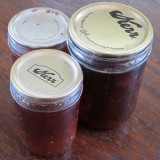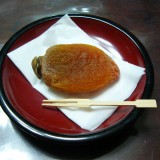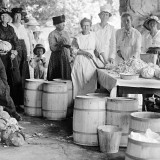
Photo by Flickr user leibolmai
Freezing foods is just about the most boring food preservation method. It’s also the easiest and best way to preserve nutrients. But, when it comes to freezing fresh vegetables from the garden there is one important step: blanching. Blanching slows down enzymatic activity that can deteriorate the quality of what you freeze. How much to blanch depends on the vegetable in question. Thankfully there’s a handy publication from Oregon State University, Freezing Fruits and Vegetables, that covers blanching times and many of the other particulars in freezing foods.
One thing not covered in that pamphlet is that some foods like berries, green beans, peas, diced onions, whole-kernel corn etc are more convenient to cook with if you can just pour them out of a freezer bag without having to break them out of a solid mass. To do this you’ll individually quick freeze IQF them. To IQF:
- Wash, blanch (veggies) and cool .
- Spread in one layer on a cookie sheet and place in the freezer for four to six hours.
- Pack in sealed containers or in freezer bags.
- Label with date to avoid freezer mystery bag phenomenon.
Now when the zombie apocalypse arrives and everything goes Beyond Thunderdome, freezing will not be the best option (unless, like Tina Turner, we figure out how to turn pig waste into propane to power our refrigerators). But I digress.





I do a lot a freezing, but I’m concerned about the amount of plastic bags that I use to do so. I started to wash my bags and reuse them but that’s such a pain, and I’m not sure the bags are really clean. I’ve been looking for a more earth-friendly method to freeze and salvage my food from the frost bite. I already use glass jars — and lost a couple of them — and also plastic conteners as well, but they do not protect meat effectivly. Any idea, aside becoming a vegan ? ;o)
Esme–bad advice on my part–I forgot that freezer wrap is coated in plastic. I’m not aware of a way to wrap a cut of meat without using plastic. Stews and soups can be frozen in glass canning jars (the straight ones without shoulders–make sure to leave enough headspace for expansion).
I freeze everything, also. I just noticed on the latest boxes of Ziploc freezer and storage bags, they can be recycled. Take clean and dry bags to drop-off bins at participating retailers in the US. Not sure about vacuum sealer bags, though.
Hi Esme–Thanks for bringing this up. Do you mean like a pork chop? Here’s a pdf from the National Center for Home Food Preservation that shows how to use butcher wrap instead of plastic: nchfp.uga.edu/publications/uga/FreezingAnimalProducts.pdf.
Hello there, I talk about meat (and fish !) in general. The pdf you pointed at is EXACTLY what I was looking for, thank you so much !
Freezer-burn is a big problem with regular refrigerator freezers, due to temperature cycling. In order to keep the freezer “frost free”, the temperature cycles up & down. Chest freezers (not frost free) stay at one temperature, which does not completely prevent freezer burn, but it won’t happen as quickly.
Another good way to help stave off freezer burn is to vacuum-seal (I use it for meat, veg, even broth sometimes), but it is more plastic.
Thank you for all of these tips! At this stage of life, freezing is a much more accessible technique for preserving our harvest for me (as opposed to canning). I’ll definitely be book marking this information.
Thanks for the tip–chest freezers and vacuum sealers are definitely great tools.
i can’t open the link…is it me, or is it you?
Sorry about that–link has been fixed.
Pingback: Freezing Meat Without Plastic | Root Simple
Pingback: Freezing Meat With Freezer Paper | Root Simple
The OSU “Freezing Fruits and Vegetables” pdf is now $1.50